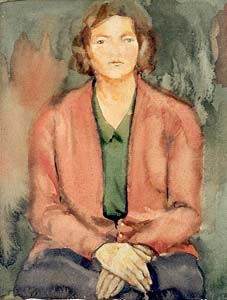Lydia Mei
Estonian artist From Wikipedia, the free encyclopedia
Lydia Mei (2 July 1896 – 14 September 1965)[1] was an Estonian artist who specialized in watercolors.
This article has multiple issues. Please help improve it or discuss these issues on the talk page. (Learn how and when to remove these messages)
|
Lydia Mei | |
|---|---|
 Self portrait | |
| Born | July 2, 1896 |
| Died | September 14, 1965 (aged 69) |
| Nationality | Estonian |
| Known for | Painting |
| Movement | New Objectivity |
| Spouse | Anton Starkopf |
Born in Liepāja, in the Courland Governorate of the Russian Empire (now Latvia), Lydia Mei was the middle child of the three daughters of an Estonian ship's captain who was born in Hiiumaa. All three sisters would become artists, with Lydia Mei and Natalie Mei achieving public prominence during the Neue Sachlichkeit (New Objectivity) period of Estonian art of the 1920s and sister Kristine Mei becoming a sculptor.
Mei studied architecture at the Petrograd Women's Polytechnic Institute until 1918. But she became famous as a watercolorist in late 1920s. She married sculptor Anton Starkopf and is occasionally credited with the name Lydia Mei-Starkopf. She died in 1965 in the capital city of Tallinn.
References
External links
Wikiwand - on
Seamless Wikipedia browsing. On steroids.
